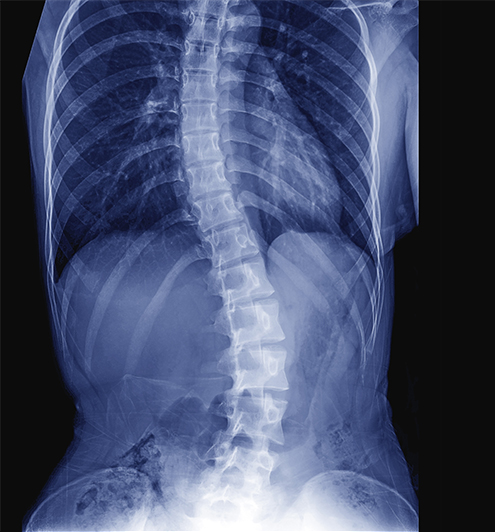SPINE SURGERY
SPINAL DEFORMITIES
Scoliosis
Kyphosis
SCOLIOSIS
Adult scoliosis is an abnormal curvature of the spine in patients who have finished growing. This condition affects more than 1.1 million people in Canada. In these patients, their spine curves abnormally to the right or left side and also involves a twisting or rotation of the bones of the spine. While many patients with adult scoliosis do not have any specific symptoms, as the vertebrae rotate, this may cause physical change in the appearance of the patient’s back. It may also lead to painful degeneration of the spine leading to back pain, nerve pain, or in severe cases alter lung and heart function. Most patients never require surgical treatment. For patients with symptomatic scoliosis, a number of non-operative treatment options are available to help treat pain and maximize function.


KYPHOSIS
Kyphosis is a rounding of the back and can cause back pain and an abnormally curved spine. The most common form of kyphosis is postural kyphosis which can be consciously corrected by standing up straight. For these patients there is no structural abnormality. However, for patients with structural kyphosis, such as Scheurmann’s kyphosis, they are unable to consciously straighten their spine. They may notice difficulty standing upright or have ongoing back or leg pain. Treatment for a kyphosis abnormality depends on multiple factors including the patient’s age, size of curve, underlying cause, and symptoms.
